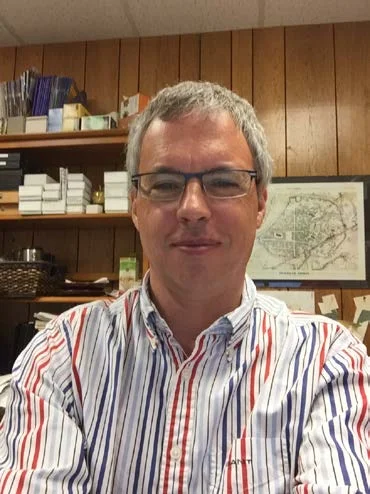Sven Egenhoff | Colorado State University
What is so Special about Shales? Concepts, Questions, and Problems (and, a Few Answers)
Abstract:
Black shales are important source rocks and unconventional reservoirs for hydrocarbons, mostly gas, but also oil. However, it is still unclear which parameters control their formation, how their internal make-up relates to the updip depositional system, the sequence stratigraphy of shales, as well as their diagenesis. Originally, black shales were thought to have formed in anoxic settings because of their high TOC contents that were seen as an indicator of a lack of free oxygen. Nevertheless, sedimentary structures in shales such as ripple foresets and ripple trains argue for at least episodic water movement that could have replenished shale environments with oxygen, and fecal strings and burrows also speak for at least to a degree oxygenated conditions during sedimentation. Based on observations from the Recent it is speculated that most organic matter is transported as marine snow particles through an oxic water column to the ocean floor. In this model, the inner part of marine snow particles is envisioned to protect organic matter from oxidizing. Diagenesis in shales is turning out to be complex with, in case of the Bakken (Williston Basin) and Tøyen (Scandinavia) shales, multiple pyrite, quartz and carbonate generations present. Surprisingly, the upper Bakken shale in North Dakota shows two carbonate generations as the earliest cement phases that point to an oxygenated depositional and earliest diagenetic environment. Sequence stratigraphy in shales is based on stacking patterns of different shale facies. In the case of the upper Bakken shale in North Dakota, this unit can be subdivided into two stratigraphic intervals with the lower one representing transgressive, and the upper regressive conditions. Detailed correlations show that a part of the upper Bakken shale is likely equivalent to the overlying Lodgepole carbonates and does not represent a completely independent unit as previously assumed.
Biography:
Sven was born in Germany, and raised in Germany, Iran, and Argentina which helped shape his career path as a geologist. After finishing high school in Buenos Aires, Argentina, Sven studied at the University of Clausthal for his undergraduate degree, and obtained his Diploma (equivalent to a Masters' degree) from Heidelberg University, Germany, on a field study in the breathtaking Italian Dolomites. Moving to Technische Universität Berlin, Germany, Sven received his PhD in 2000 for a study on basin analysis in southern Bolivia. After a five year lecturer position at Technische Universität Bergakademie Freiberg in south-eastern Germany, he accepted the position as Assistant Professor at Colorado State University in 2006, was promoted to Associate Professor in 2010, and to Full Professor in 2016. Sven’s areas of expertise are understanding sedimentary processes in carbonates and shales, and applying resulting depositional models to better characterize oil and gas reservoirs.


